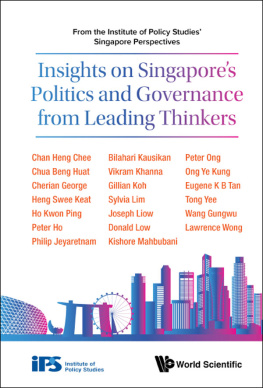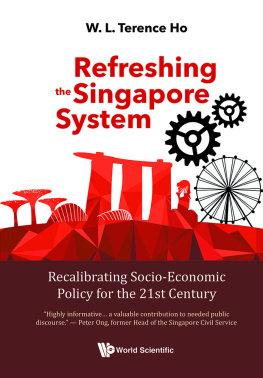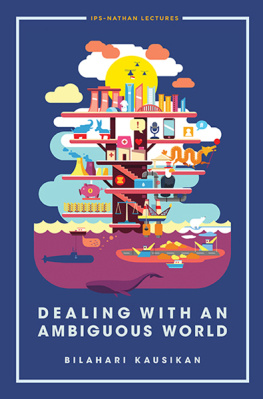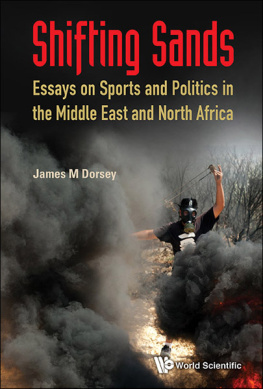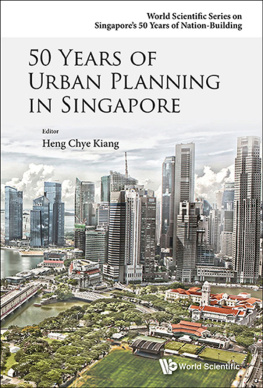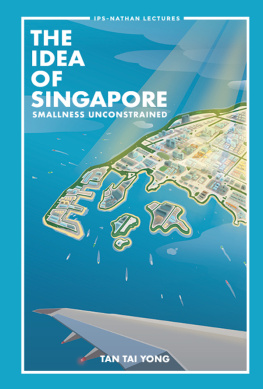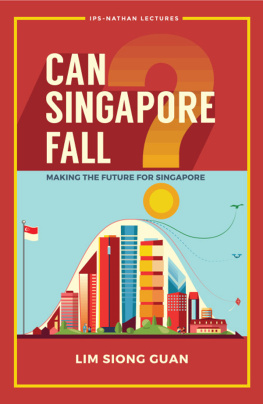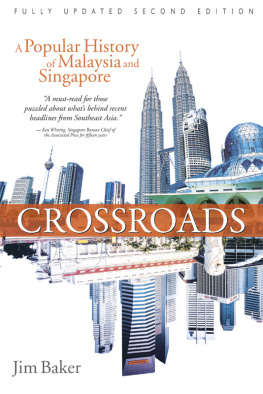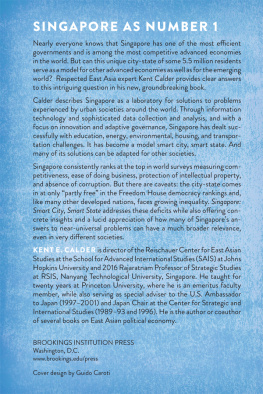Published by
World Scientific Publishing Co. Pte. Ltd.
5 Toh Tuck Link, Singapore 596224
USA office: 27 Warren Street, Suite 401-402, Hackensack, NJ 07601
UK office: 57 Shelton Street, Covent Garden, London WC2H 9HE
British Library Cataloguing-in-Publication Data
A catalogue record for this book is available from the British Library.
INSIGHTS ON SINGAPORES POLITICS AND GOVERNANCE FROM LEADING THINKERS
From the Institute of Policy Studies Singapore Perspectives
Copyright 2019 by World Scientific Publishing Co. Pte. Ltd.
All rights reserved. This book, or parts thereof, may not be reproduced in any form or by any means, electronic or mechanical, including photocopying, recording or any information storage and retrieval system now known or to be invented, without written permission from the publisher.
For photocopying of material in this volume, please pay a copying fee through the Copyright Clearance Center, Inc., 222 Rosewood Drive, Danvers, MA 01923, USA. In this case permission to photocopy is not required from the publisher.
ISBN 978-981-120-484-5
ISBN 978-981-120-502-6 (pbk)
For any available supplementary material, please visit
https://www.worldscientific.com/worldscibooks/10.1142/11401#t=suppl
Desk Editor: Jiang Yulin
Printed in Singapore
CHAPTER
Singapores Emerging Informal Public Sphere
CHERIAN GEORGE
INTRODUCTION
One of the major media milestones that Singapore crossed in 2006 was the introduction of High Definition TV or HDTV. Offering extremely high resolution widescreen pictures coupled with the benefits of digital interactivity and more channels, HDTV was showed off at selected public places such as community clubs. The Media Development Authority and private-sector technology partners were banking on the likelihood that crystal clear images of glistening dew on the tip of a leaf in a nature documentary, or the instantly spottable golf ball sent zipping through the air by Tiger Woods, would convince Singaporeans to embrace HDTV and justify the investments in this new technology.
Ironically, however, the televisual trend that caught on in 2006 without any formal encouragement had a screen size of about one-fortieth of a HDTV set, and grainy pictures reminiscent of the work of an impressionist painter not wearing his glasses. This was of course YouTube, which became the flagship of the movement known as user-generated content a movement supposedly so significant that Time magazine named You as its Person of the Year. Together with blogs and other communication technologies, YouTube is helping to turn the journalism of the lecture into the journalism of the conversation (Gillmor, 2004).
Indeed, to the extent that nations are imagined communities (Anderson, 1991), the national media are principal imagineers, to borrow a job title from the Disney corporation.
However, the norms and protocols that are necessary for the proper functioning of the formal public sphere typically exclude and marginalise minority points of view, even in the freest of liberal societies. Therefore, the informal public sphere plays an important role in allowing broad participation; they are the spaces where people can share ideas more freely. Here, says Jrgen Habermas (1996), new problem situations can be perceived more sensitively, discourses aimed at achieving self-understanding can be conducted more widely and expressively, collective identities and need interpretations can be articulated with fewer compulsions than is the case in procedurally regulated [formal] public spheres. These are the roles that user-generated alternative media, with their low barriers to entry, are exceedingly well suited to.
An informal public sphere is not new either as an idea or as a social phenomenon. In Singapore, however, it may take some getting used to. Peoples Action Party (PAP) ideology has emphasised consensus rather than the expression of dissonant viewpoints. This ideology has been institutionalised in the media system, with strict licensing laws ensuring that the mainstream media are under the duopoly control of large, trusted corporations. The proliferation of niche and alternative media has put pressure on mainstream media and on the government.
CHALLENGES FOR MAINSTREAM MEDIA
Singapores mainstream media are being challenged on a number of fronts profits, readership and viewership, and influence. Blogs and other user-generated content are only part of that challenge, and indeed the mainstream media were in gradual decline long before blogging. The audiences attention is dissipating across a wider diversity of media forms. At the same time, the advertisers that used to reward newspapers for their ability to congregate the masses now have alternative outlets, ranging from niche magazines to public transport vehicles.
This decline needs to be put in perspective: newspapers are still the most profitable media businesses, and still occupy the commanding heights of the news business; it is just that its degree of dominance is slipping. Mainstream medias superior resources should mean that they will continue to be able to offer more and better content than most of their competitors. However, as general interest media, the mainstream media cannot hope to serve all of the people all of the time. As Singapore society becomes increasingly complex and variegated, as sub-cultures proliferate, and as tastes become increasingly specialised, it is getting tougher for the national media to serve all of the people even some of the time.
Media companies around the world are responding by spinning off more niche publications and supplements. There are two problems with this approach. One is that not all readers are created equal in media companies eyes. If you have the disposable income to shop for cars, luxury watches, designer clothes and spa vacations, media companies will pander to you in order to deliver you to their advertisers. Readers of lesser means are less attractive to advertisers and are thus unlikely to see the creation of magazines, supplements or special sections on such themes as how to reduce household bills or maintain emotional health through methods other than shopping. In a country with a growing and already sizeable socio-economic divide, there is a risk of large segments being unserved by the media. There is another problem with going niche. While people want to nurture their own unique identities and pursue their own interests and lifestyles, society as a whole would be poorer if there were no common spaces left. If the national media appealed to all of the people none of the time, one would have to ask if there is anything Singaporean about Singapore any more. Therefore, the mainstream media need to balance individual desires for niche content with the social need for common spaces. This is easier said than done, but must remain a top priority.

